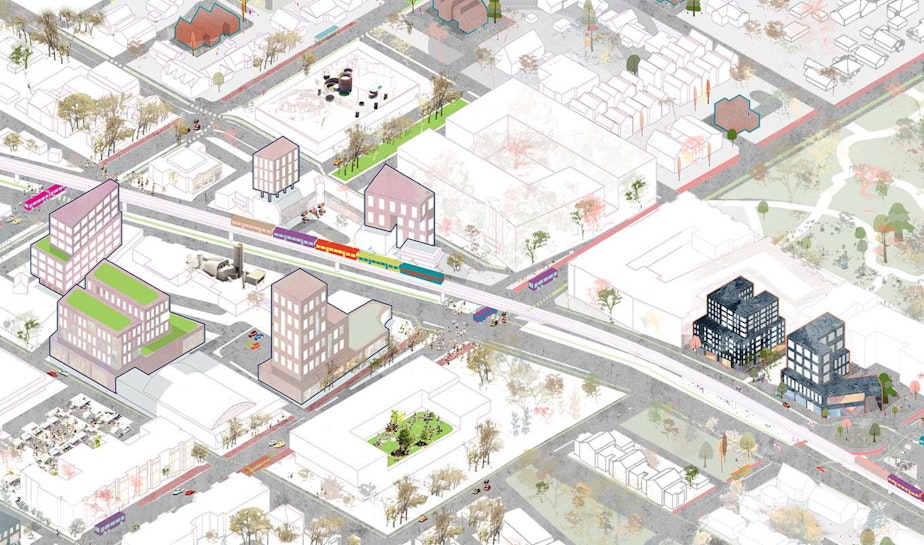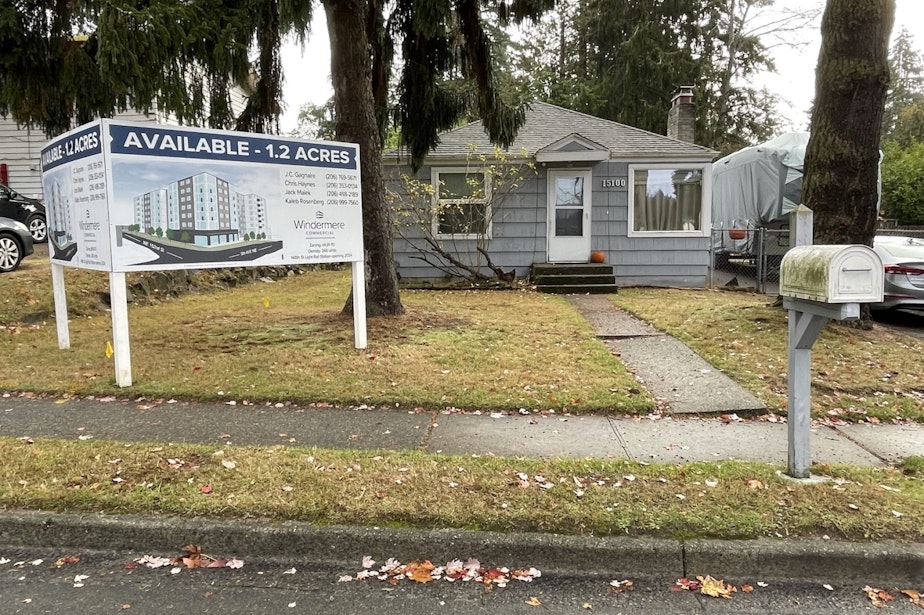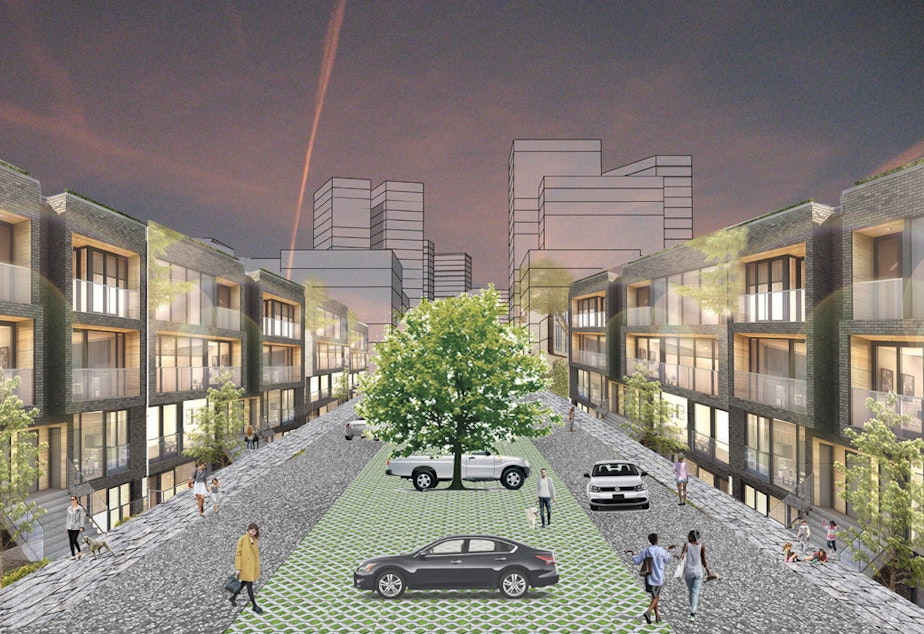2023 housing strategies proposed by Seattle's top CEOs

As the 2023 session gets underway for the Washington State Legislature, two big reports offer guidance on how to tackle the housing shortage.
One comes from a group of top CEOs and former Washington Governor Christine Gregoire; the other, from the non-profit Urban Institute. Both point to similar strategies.
The first report comes from a group of 21 prominent local CEOs called Challenge Seattle, led by former Governor Christine Gregoire.
Gregoire said such CEOs want housing, not just for their employees, but for people like teachers and firefighters, who make a community work.
The CEO group made 19 policy recommendations. Gregoire said one stands out: allowing duplexes, triplexes and townhomes on land currently reserved for single family homes, a move that cities like Auburn and Federal Way have resisted in the past.
RELATED: What Washington's housing legislation could look like in 2023
“Quite frankly this fundamental first step is to address zoning and density," Gregoire said. "And it’s that foundation upon which all other recommendations are made.”
On top of that zoning reform, Gregoire said the region needs a comprehensive set of policies that make sure we’re getting the right housing, in the right places, for the right price.
Sponsored
- We need more two- and three-bedroom apartments to house growing families, she said, not studios and one-bedrooms.
- The government and philanthropists must spend more money to offset the cost of housing for low-income families and first-time home buyers.
The report also highlights strategies to dramatically increase the supply of housing. The goal is to reduce competition for homes and bring down prices.
- We should speed up the permit process for new housing developments and create a way for builders to get their projects approved by a state body when they’re denied locally.
- Turn underused government parking lots into affordable housing.
- Override local zoning laws that require parking stalls in new apartment buildings near transit. Two parking stalls in a garage adds an average $120,000 to the cost of a new apartment unit.
- Encourage community land trusts.
- Increase the number of construction workers by paying for their classes and childcare needs.
- Make it less risky for developers to build condos (apartments that you can buy).
- Give below-market loans and grants to affordable housing developers.
- Help first time home buyers pay for a down payment on a home.
- Pay to preserve more existing affordable housing.
Sponsored
Some of these reforms take power away from local mayors. Opposition from mayors in cities like Auburn and Federal Way helped derail similar reforms during the last session of the state Legislature.
But Gregoire says this time, she’s more optimistic because the more conservative Association of Washington Cities has signaled support for these ideas, in principle. Gregoire says it will be important to bring all these stakeholders along if these ideas are to become laws.
“Yesterday, in briefing some legislators, I said to them, ‘You’ve got to work with the mayors, you’ve got to work with the county executives, they understand the problem, and the problem isn’t identical’” in every jurisdiction.
RELATED: The Ripple Effect — How Seattle's housing woes push people out and what to do about it
The challenge is that the more flexibility for cities that you build into a comprehensive housing package, the less control the state has in actually achieving its housing goals.
Sponsored
“It’s a tough nut,” Gregoire said, that will require a combination of economic incentives and penalties. “But it needs to be done. If it’s not done, we cannot solve affordable housing.”

Housing types versus transit access
T
he second big report published last week came from the Urban Institute, a non-profit research institution.
Sponsored
“Making Room for Housing near Transit: Zoning’s Promise and Barriers” recommends doubling the planned density around light rail stations and bus rapid transit lines.
While Gregoire’s CEO group highlighted the need for more housing near transit, The Urban Institute’s researcher Yonah Freemark highlighted systemic problems that reduce the amount of housing that gets built there. For example, Everett has already done some zoning reform.
RELATED: What's a 'housing benefit district' and why do people want them around light rail stations?
“The zoning there is actually pretty accommodating," Freemark said. "You can build multiple units on most lots that are occupied by single family homes. But the reality is that the real estate market there is pretty weak compared to the rest of the region. And so, you can’t actually bring developers in to build, even though the regulatory environment suggests that you should be able to attract new housing.”
“On the other hand, you have communities like Lake Forest Park and Mercer Island, that have really strong real estate market,” Freemark said.
Sponsored
Both communities are getting rapid transit: light rail for Mercer Island, and Bus Rapid Transit for Lake Forest Park. Both communities have very expensive homes, “which means people want to live there and are willing to spend a lot of money to live there."
“But at the same time you have zoning there that's very restrictive; you're not able to build hardly anything other than single family homes. As a result, you're not getting very much housing built there,” despite major investments in transit in those locations, which unlocks the option of lower-cost car-free living.
South Bellevue offers another example, Freemark said, of a community with restrictive zoning a short distance away from great transit.
To correct this mismatch between real estate markets and transit investments, the study advised doubling the allowable density around bus rapid transit and light rail stations. That could help lure developers to places like Everett, Freemark said, while at the same time increasing the number of housing units built in more exclusive places like Lake Forest Park and Mercer Island.
RELATED: Four big housing ideas that could reshape greater Seattle
Like Gregoire, Freemark also highlighted the problem that parking stalls are required near transit, noting that "50% of land near transit in the Seattle region continues to require parking. That can be changed tomorrow if the cities want to.”



